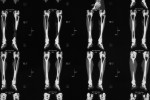 Here’s a health condition that’s on the rise and for which awareness needs to be raised: peripheral arterial disease, or PAD. PAD is characterized by plaque build-up in the arteries that carry blood to three specific areas outside of your heart: your organs, head, and limbs.
Here’s a health condition that’s on the rise and for which awareness needs to be raised: peripheral arterial disease, or PAD. PAD is characterized by plaque build-up in the arteries that carry blood to three specific areas outside of your heart: your organs, head, and limbs.
One in 20 Americans over the age of 50 has PAD. It is estimated that up to 30% of seniors over the age of 70 have the condition. For those over the age of 80, that number rises to 35%. The incidence of PAD has increased by almost 25% worldwide in the past decade.
PAD most often shows up in the legs, though it is also commonly found in the arteries that carry blood from your heart to your arms, stomach, kidneys, and head. What is plaque made up of and why does it settle in your arteries? If you guessed cholesterol, you’d be right. Plaque also contains excess fatty acids, calcium, and fibrous tissue.
Let’s talk for a moment about PAD and blocked blood flow to your legs. This condition can cause symptoms of pain and numbness and can increase your risk for getting an infection in your legs. For those with PAD, an infection can become a serious thing. Your body may not be able to fight off the infection and if it can’t be stopped, gangrene can set in.
How can you tell if you might be suffering from PAD? If you experience any pain in your legs when you climb stairs or even walk, it’s a good idea to discuss this with your doctor and rule out PAD. Many seniors do not receive a diagnosis of PAD until the problem has become quite significant and serious. They mistakenly think that their leg pain is due to normal aging. Your doctor can perform a test to see if your leg pain is caused by PAD.
The PAD test is simple and won’t cause you any discomfort. The test is referred to as an ankle-brachial index (ABI). Your doctor will hold an ultrasound probe in his or her hand and use it to determine the blood pressure in your upper arm and then your ankle. These two values should be about the same. If the pressure in your ankle is much lower than the reading in your arm, you most likely have PAD. Severity of the condition can be further determined by using an angiogram. An angiogram can show the precise location of any major blockage. Surgery may be required for blockages of this magnitude.
Who is at risk for PAD? The risk factors are similar to those for heart disease. Smoking is high on the list, as is high blood pressure and high cholesterol. Other diseases such as type 2 diabetes also play a role in the onset of PAD.
Along with some potentially nasty symptoms, PAD can triple your risk for having a heart attack or stroke. It’s important to take steps to reduce the plaque in your arteries. Diet, exercise, and medication could all help to reverse the symptoms of PAD. As was mentioned, surgery may sometimes be necessary.
Source(s) for Today’s Article:
“What is Peripheral Artery Disease?” National Heart, Lung and Blood Institute web site, http://www.nhlbi.nih.gov/health/health-topics/topics/pad/, last accessed Aug. 6, 2013.
Stansby, G., et al., “High risk of peripheral arterial disease in the United Kingdom: 2-year results of a prospective registry,” Angiology. February 2011; 62(2): 111-8.
Joosten, M.M., et al., “Associations between conventional cardiovascular risk factors and risk of peripheral artery disease in men,” JAMA. Oct 24, 2012; 308(16): 1,660-7.
